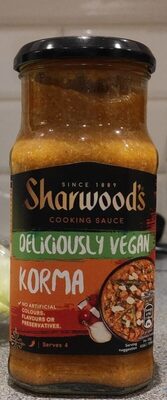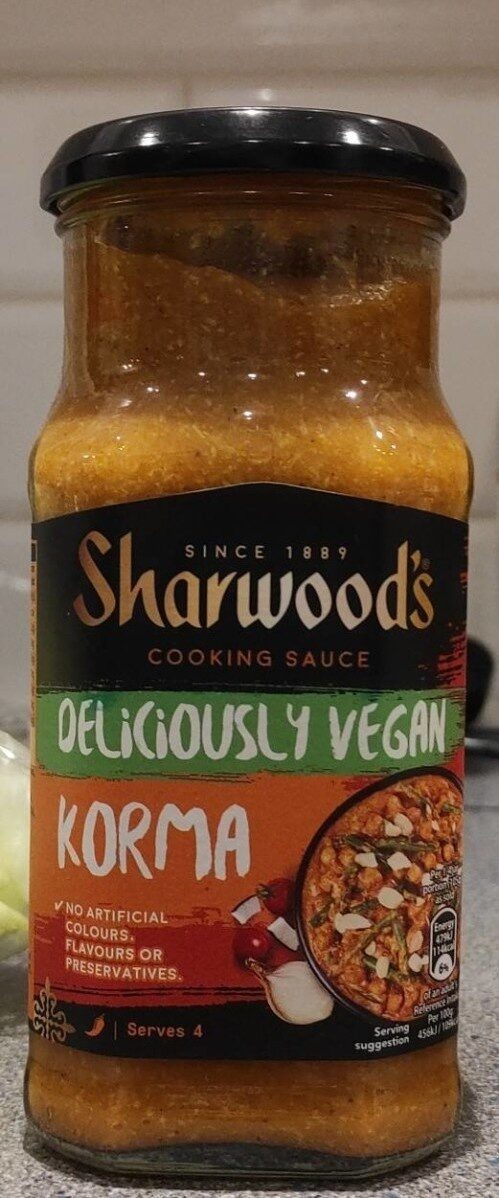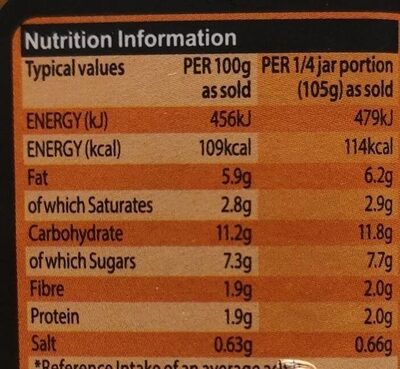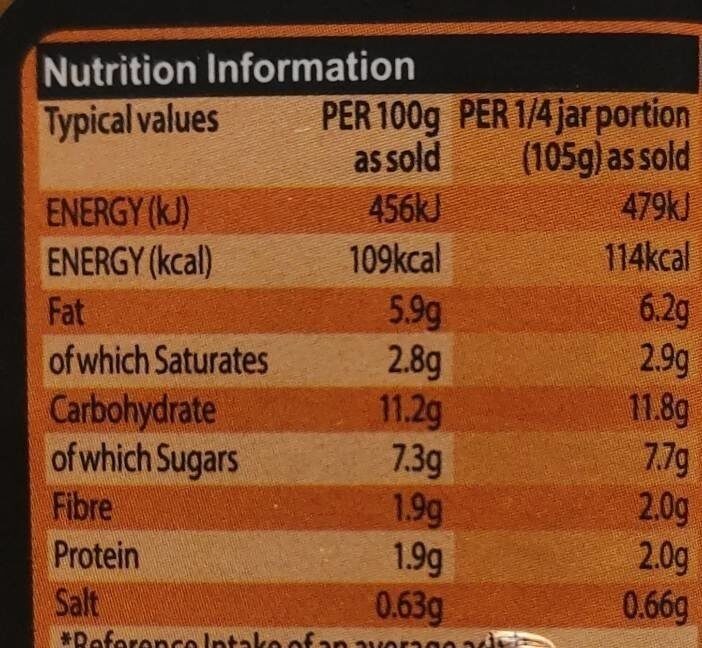Deliciously Vegan Korma - Sharwood's - 420g
This product page is not complete. You can help to complete it by editing it and adding more data from the photos we have, or by taking more photos using the app for Android or iPhone/iPad. Thank you!
×
Barcode: 5000354918469 (EAN / EAN-13)
Common name: Korma Sauce
Quantity: 420g
Packaging: Plastic, Glass, Clear Glass
Brands: Sharwood's
Categories: Condiments, Sauces, Indian-sauces
Labels, certifications, awards: Vegetarian, Vegan
Countries where sold: Ireland, United Kingdom
Matching with your preferences
Report a problem
Data sources
Product added on by kiliweb
Last edit of product page on by roccait.
Product page also edited by yuka.sY2b0xO6T85zoF3NwEKvlk9WePbZqDPAayTmpH2tmMaOcKH4XdJCxZHfH6o.
If the data is incomplete or incorrect, you can complete or correct it by editing this page.











